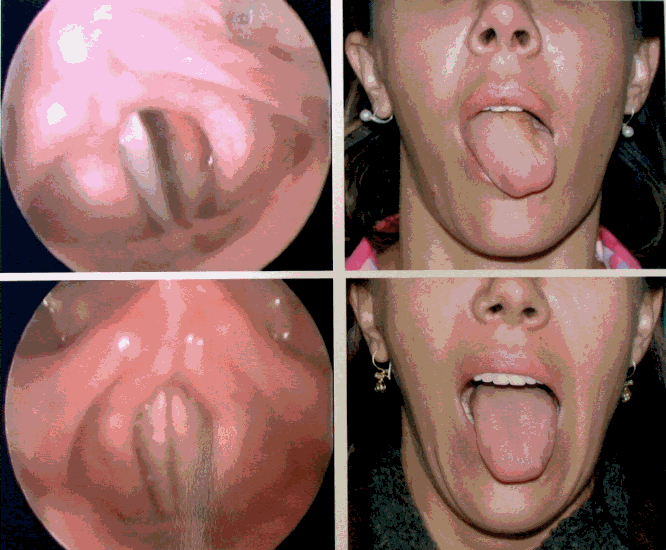Wednesday, October 29, 2003
3829
P73: Tapia's Syndrome Following Septorhinoplasty
Hoarseness or transient difficulty in swallowing often follows difficult or long lasting endotracheal intubations. These symptoms are universally improve spontaneously over a short period of time without any specific treatment. However, cranial nerve injuries following a surgery is unusual. For such injuries the most vulnerable cranial nerves are the branches of abducens, lingualis hypoglossal and vagal nerves despite the fact that these are rarely seen complications. Moreover, the palsy of both hypoglossal and vagal nerves in the same patient is even more exceptional. This rare combitanion causes a unilateral paralysis of the muscles of the tongue associated with palsy of the ipsilateral vocal cord, and is due to a lesion of the 12th and 10th cranial nerves which is known as Tapia's Syndrome. We describe another case of Tapia’s syndrome, which was occurred following an uneventful septorhinoplasty.
A healthy 42 year-old female scheduled for a septorhinoplasty. The transoral intubation was performed without any difficulty during which the head was dorsiflexed for a very short period for direct laryngoscopy. Once the cast was applied to the nose the patient was extubated without any difficulty. Postoperatively the patient complained of hoarseness and difficulty in tongue movements and swallowing. She had significant dysarthria and the tongue was deviated to the left when protruded. A laryngostroboscopy examination revealed, a submucosal hemorrhage of the left vocal cord and it was immobile in the paramedian position (Fig.). The examination of other cranial nerves showed that no other nerve was involved. With these findings, patient was diagnosed as left lower motor neuron 12th and 10th cranial nerves palsy. The patient was started on oral prednisolone 60mg/day which was tapered down over 10 days and B12 500mcg/day and B6 100 mg/day for three months. The recovery started after the first month and a gradual improvement was observed both on 10th and 12th nerves.

Figure :Paramedian fixed left vocal cord with some bruising and hematoma on it was detected during laryngostroboscopy (upper left); Marked deviation to the left was observed when the patient asked to protrude her tongue (upper right); At postoperative nine months both vocal cords were functioning symetrically (lower left); The tongue deviation was also improved significantly (lower right).
As a conclusion, Tapia`s Syndrome is a very unexpected complication that can occur after any surgery under endotracheal general anaesthesia. When it is occurred especially in a surgery for cosmetic purposes it is demoralizing both for the patient and surgeon. We should be all aware of the possible mechanisms of the injury, advocate the proper diagnostic work-up, try to accelerate the recovery period and reassure our patient as it is almost always transient.
View Synopsis (.doc format, 170.0 kb)
See more of Posters
Back to Plastic Surgery 2003 Complete Scientific Program
Back to Plastic Surgery 2003 Meeting home
